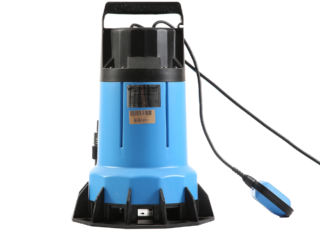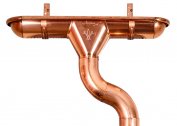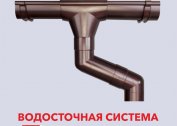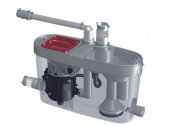Submersible pumps of the Drainage series are manufactured by the well-known Russian brand Dzhileks. The entire line of pressure equipment is suitable for pumping contaminated liquids with an abundance of impurities. But each model has its own design features.
The principle of operation and device
The scope of use of such pressure units is quite wide. They are used to pump water from the following sources:
- polluted pools;
- pits;
- wells;
- basements and cellars;
- low density sewage pits;
- for watering the garden and gardens from wells and ponds.
All submersible pump models are not very different in design. Parts of the devices are under the sealed protection of the cylindrical body. Its inner part is divided into two compartments: motor and working. In the first chamber there is an electric motor, which consists of a rotor, a stator and self-lubricating bearings. A special temperature sensor is built into the winding of the electric motor, which turns off the device when the motor overheats significantly.
An impeller with blades made of a special alloy of polymers and a diffuser is installed in the working compartment. It receives liquid after acceleration by the impeller. The pumps are equipped with float mechanisms that stop the unit when the water level drops.
Lineup and Specifications
In the Drainage lineup there are six devices with an immersion depth of up to 8 m:
| Model | Productivity (L / min) | Power, W) | Water supply (m) | Advantages |
| 110/6 | 110 | 200 | 6 | Auto power off when the fluid level in the working compartment drops to 15 cm. |
| 170/9 | 170 | 670 | 9 | High motor power for a small machine. |
| 200/25 | 200 | 1200 | 25 | The greatest distance pumping water. The exhaust pipe is located on the upper part instead of the diffuser. |
| 220/14 | 220 | 750 | 14 | Automatic shutdown system. Possibility of pumping inclusions up to 6 mm. |
| 350/17 | 350 | 1200 | 17 | Coarse-mesh grate for water intake, thanks to which large solids can be pumped. |
| 550/14 | 550 | 2000 | 14 | A powerful electric motor is capable of pumping water with solid inclusions up to 40 mm in size. |
In addition to the six models presented, in the Drainage line there are three more modified pumps. By design, they are similar to the main units, but are used for pumping fecal matter.
The minimum performance among them has a model of 150 6 ft. This is a fecal drainage pump in a plastic housing and a float protection mechanism. Designed for pumping large particles from septic tanks, sewage pits and toilets. The permissible size of the fractions is 35 mm. Works at a speed of 150 l / min. Its analogue in the stainless steel case is the Drainage unit 150 7 fn.
The leader in performance among the Drainage line is 255 11 fn. It is capable of pumping liquid at a speed of 255 l / min and transferring water under pressure up to a distance of 11 m. It is equipped with an electric motor with a power of 1100 W indicated by the manufacturer.
The choice of pump depends on the operating conditions: pumping out melt water from the basement or water intake for irrigation. It is done on the basis of design indicators of models.
Features of pressure equipment
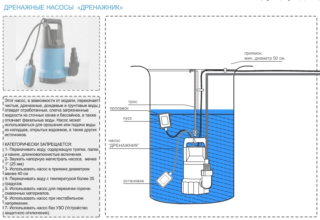 "Drainers" - devices are quiet, unpretentious, easy to operate. They are equipped with thermal protection and weigh a little. Connection according to the instructions can be done by yourself, without calling specialists. Maintenance is not required, as all bearings are self-lubricating, closed type.
"Drainers" - devices are quiet, unpretentious, easy to operate. They are equipped with thermal protection and weigh a little. Connection according to the instructions can be done by yourself, without calling specialists. Maintenance is not required, as all bearings are self-lubricating, closed type.
Of the minuses, a limitation on the temperature of the pumped liquid can be noted: only in the range from zero to 35 degrees heat.This should be taken into account if the pump is used for pumping water, for example, during a breakthrough on the hot water main. It is necessary to wait some time for it to cool.
In order for the pump to last for a long time, periodic cleaning is required. To do this, it should be disassembled, after drying well and cleaning the outer part of the housing:
- Loosen the screws that connect the case. This is done evenly.
- Remove the housing cover together with the screws, gently remove the rubberized gasket and disconnect the float protection.
- The impeller with the rotor and the motor are dismantled in stages.
After parsing, the pump is washed from dirt, sludge and other particles. After that, it is thoroughly dried and collected in the reverse order.
The overall functionality and operational period of the pump can be significantly increased by putting an additional filter element on it. It will filter the liquid entering the nozzle, so that the cleaning of the parts of the device will be postponed for a longer period.
